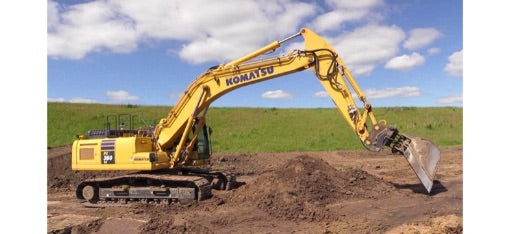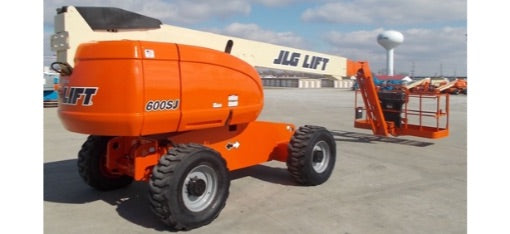Ford a ajouté deux variantes à sa famille de véhicules utilitaires – les variantes Trail et Active sur ses gammes Transit (2 tonnes) et Transit Custom. Ces modèles ont chacun des objectifs différents aux deux extrémités du spectre. L'un est conçu pour négocier des terrains difficiles, hors route ou sur des chantiers de construction, et l'autre est destiné à répondre aux modes de vie "actifs". Dans les deux cas, il est nécessaire d'avoir une bonne adhérence sur Codes de défaut du système AWS Ford Transit pour garantir que votre véhicule est toujours en parfait état de fonctionnement.
Cliquez ici pour en savoir plus sur le système AWS du Ford Transit.
Avant d'entrer dans les détails du logiciel de diagnostic Ford, il est nécessaire d'avoir une compréhension de base du système Ford Transit mLSD AWD. Le véhicule est conçu pour avoir une traction supplémentaire sur des surfaces glissantes et molles, vous donnant la confiance nécessaire pour conduire sur des pistes hors route. Cela est possible car le mLSD déplace automatiquement le couple moteur dans des conditions glissantes vers la roue qui a le plus de traction, permettant au Transit de se déplacer en douceur sur l'obstacle à venir.
Une partie de la liste de suivi des codes de diagnostic de Ford est le système de contrôle électronique de la stabilité qui a été recalibré pour s'aligner avec le mLSD. C'est un système qui améliore les caractéristiques de maniabilité du Ford Transit sans avoir d'effet sur l'efficacité énergétique ou les émissions de CO2. Aucune intervention supplémentaire du conducteur n'est requise pour plus de traction car le véhicule détecte et ajuste l'accélération en conséquence.
L'outil de diagnostic Jaltest pour le système AWS de la Ford Transit
Lorsque les voyants d'avertissement s'allument sur le tableau de bord de votre véhicule Ford Transit AWS, considérez cela comme un cri de détresse des systèmes internes du véhicule. Heureusement, les véhicules modernes, y compris les flottes Ford Transit, sont équipés du système de diagnostic embarqué 2 (OBD 2) qui peut vous informer de tout problème sous forme de voyants d'avertissement Ford Transit sur le tableau de bord.
Une fois que vous savez comment lire les codes OBD 2, vous obtenez des informations sur la santé du véhicule et pouvez prendre des mesures préventives avant qu'ils ne deviennent des problèmes majeurs entraînant une panne. Avec notre outil de diagnostic Ford, vous pouvez soit effectuer un scan complet du système pour savoir si toutes les métriques fonctionnent de manière satisfaisante, soit entreprendre des scans par symptômes afin que des problèmes spécifiques soient résolus et que votre flotte de Ford Transit soit toujours sur la route.
Nous allons maintenant passer à la partie principale du diagnostic du véhicule Ford Transit et obtenir plus d'informations sur le fonctionnement des codes du système OBD 2.
Comprendre la liste des codes d'erreur Ford
Le Service système AWS Ford Transit les recommandations sont conçues pour maintenir votre flotte en marche, quel que soit le martèlement qu'elle pourrait subir dans des terrains difficiles. Le système OBD 2 est une partie standard de tous les véhicules fabriqués aux États-Unis après 1996. Le principal objectif du système est de suivre la performance de plusieurs paramètres du véhicule, y compris les émissions, le moteur, les transmissions, la surchauffe, et plus encore. Toutes ces informations sont continuellement recueillies par des capteurs et vous sont communiquées par les voyants d'avertissement Ford Transit.
Notre scanner de codes d'erreur Ford peut lire le langage secret utilisé par le véhicule pour vous communiquer tout problème. Lorsque le véhicule rencontre un problème dans ses systèmes, un code est généré par l'OBD 2 qui se réfère à un problème ou dysfonctionnement spécifique. Ces codes sont des indices précieux qui aident à diagnostiquer et résoudre tout problème. Cela évite les suppositions de votre part sur ce qui ne va pas, afin que des remèdes précis puissent être élaborés.
Contactez-nous à propos du scanner de code de défaut Ford Transit.
Lecture des codes OBD 2 du système AWD de la Ford Transit
Vous trouverez le port OBD 2 situé soit sous le tableau de bord du côté du conducteur, soit près de la console centrale. Il a une forme unique avec deux rangées de broches et est facile à identifier. Vous pouvez consulter le Manuel pour connaître sa position précise.
Voici les étapes pour lire les codes OBD 2 et comment les interpréter.
Étape 1 : Utilisez un outil de diagnostic Ford
Pour récupérer les codes OBD 2, vous aurez besoin d'un lecteur de codes ou d'un outil de diagnostic et de dépannage. Le scanner de diagnostic Jaltest Ford sera très utile ici. Il peut lire tous les codes d'erreur allant des moteurs aux transmissions en passant par les ordinateurs de bord de votre flotte de Ford Transit et prendre des mesures préventives ou correctives qui ne sont pas inférieures à un service de niveau concessionnaire.
Étape 2 : Connectez le scanner à la liste des codes d'erreur Jaltest Ford
Insérez le connecteur de la Logiciel de diagnostic Ford Dans le port OBD 2 du Transit. Gardez l'allumage en position "on" mais le moteur ne doit pas tourner.
Étape 3 : Lisez les codes
Notre liste de codes d'erreur Ford fournit des instructions sur la façon de lire les codes. Le scanner affiche une liste de caractères alphanumériques, chacun représentant des problèmes spécifiques dans le système AWS du Ford Transit.
Comment Interpréter les Codes OBD 2
Après avoir récupéré les codes OBD 2, vous devez maintenant les décoder. C'est ce que fait le Jaltest de pointe Codes de diagnostic de panne Ford la liste est optimisée pour faire. Le code se compose de cinq caractères, le premier étant une lettre et les quatre suivants des chiffres.
C'est ainsi que l'outil de diagnostic décode la liste des défauts.
- Le premier caractère est une lettre de l'alphabet qui désigne le système ou la zone où se trouve le défaut. Par exemple, "C" désigne les problèmes de châssis, "P" pour le groupe motopropulseur, "U" pour la communication réseau, et "B" pour la carrosserie.
- À partir du deuxième caractère, ce sont des chiffres. Le premier chiffre est un 1 ou un 0. Le chiffre 1 signifie que le problème est spécifique au fabricant, tandis que 0 indique que le problème est générique.
- Les troisième, quatrième et cinquième numéros fournissent progressivement des informations sur le problème au sein du système.
Pour lire correctement les codes et prendre des mesures au niveau du service, vous aurez besoin d'un outil de dépannage comme notre scanner de diagnostic Ford.
Codes de défauts courants pour le système AWS de Ford Transit
Maintenant que vous savez comment lire les codes OBD 2, voici quelques exemples pour vous aider à mieux comprendre le concept.
- P0300 - Défaillance aléatoire/multiple de cylindre détectée :
Ce code apparaît lorsqu'il y a plusieurs cylindres de moteur qui ratent. Physiquement, vous sentirez le moteur trembler et produire moins de puissance. Ce code de défaut est généralement dû à des bobines d'allumage défectueuses, des bougies d'allumage ou des problèmes d'alimentation en carburant.
Les causes possibles incluent des bougies d'allumage défectueuses, des bobines d'allumage ou des problèmes d'alimentation en carburant.
- P0171 - Système trop pauvre (Banque 1):
Ce code indique que le rapport air-carburant dans le moteur est bas, c'est-à-dire qu'il y a trop d'air et trop peu de carburant. Les causes probables pourraient être des injecteurs de carburant défectueux, des capteurs de débit massique d'air sales ou des fuites de vide. Avec ce problème, vous devez effectuer un service de défaillance du moteur Ford Transit maintenant.
- P0420 - Efficacité du système catalytique en dessous du seuil (Banque 1) :
Ce code est un indicateur qu'il y a des problèmes avec le catalyseur qui pourrait ne pas traiter efficacement les gaz d'échappement. Certaines des réparations recommandées incluent soit le remplacement du catalyseur, soit la vérification de l'existence de fuites dans l'échappement.
Un autre code d'erreur important qui pourrait apparaître dans notre Scanner de codes de défaut Ford il y a une accumulation excessive de suie dans le filtre à particules diesel. Cela empêche le véhicule de fonctionner en mode de performance optimale et il pourrait même passer en mode dégradé. Pour prévenir cette possibilité, nous effectuons des régénérations forcées et mesurons la pression et la température des gaz d'échappement.
Dépannage par étapes pour le système AWS du Ford Transit
Comment utiliser notre logiciel de diagnostic Ford pour obtenir les meilleures performances de votre Ford Transit ? Voici un processus étape par étape pour utiliser notre outil de dépannage.
- Connectez l'outil Jaltest au port OBD et lisez le code d'erreur affiché sur le logiciel de diagnostic.
- Selon le code de défaut, prenez un service de niveau concessionnaire si nécessaire. Vérifiez les composants associés pour des signes visibles d'usure. Notre logiciel offre même des conseils sur les procédures de remplacement des composants.
- Si vous vous basez sur des analyses système en fonction des symptômes, vous pourriez avoir besoin d'utiliser des outils spécifiques comme un testeur de compression ou un multimètre pour diagnostiquer les systèmes.
- cas de diagnostic montrant des pièces et composants défectueux, remplacez-les ou réparez-les.
Après que les problèmes ont été résolus, utilisez notre scanner pour effacer le Codes de défaut de diagnostic Ford. Pour être sûr du véhicule, faites un essai routier pour confirmer que tous les problèmes ont été résolus.
Résumé
De nombreux éléments de la liste des codes de défaut Ford peuvent être évités grâce à un entretien préventif de votre flotte de véhicules Ford Transit. Assurez-vous d'effectuer un entretien et une maintenance réguliers comme conseillé par le fabricant du véhicule pour éviter les problèmes qui entraînent des codes de défaut et donc des réparations potentiellement coûteuses.
Dans la plupart des cas, la maintenance préventive ne signifie pas passer par des procédures élaborées. Des changements d'huile réguliers, la vérification et le remplacement des bougies d'allumage usées ou sales, ainsi que le remplacement des filtres à air et à carburant sont tout ce qui doit être fait.








































Laissez un commentaire